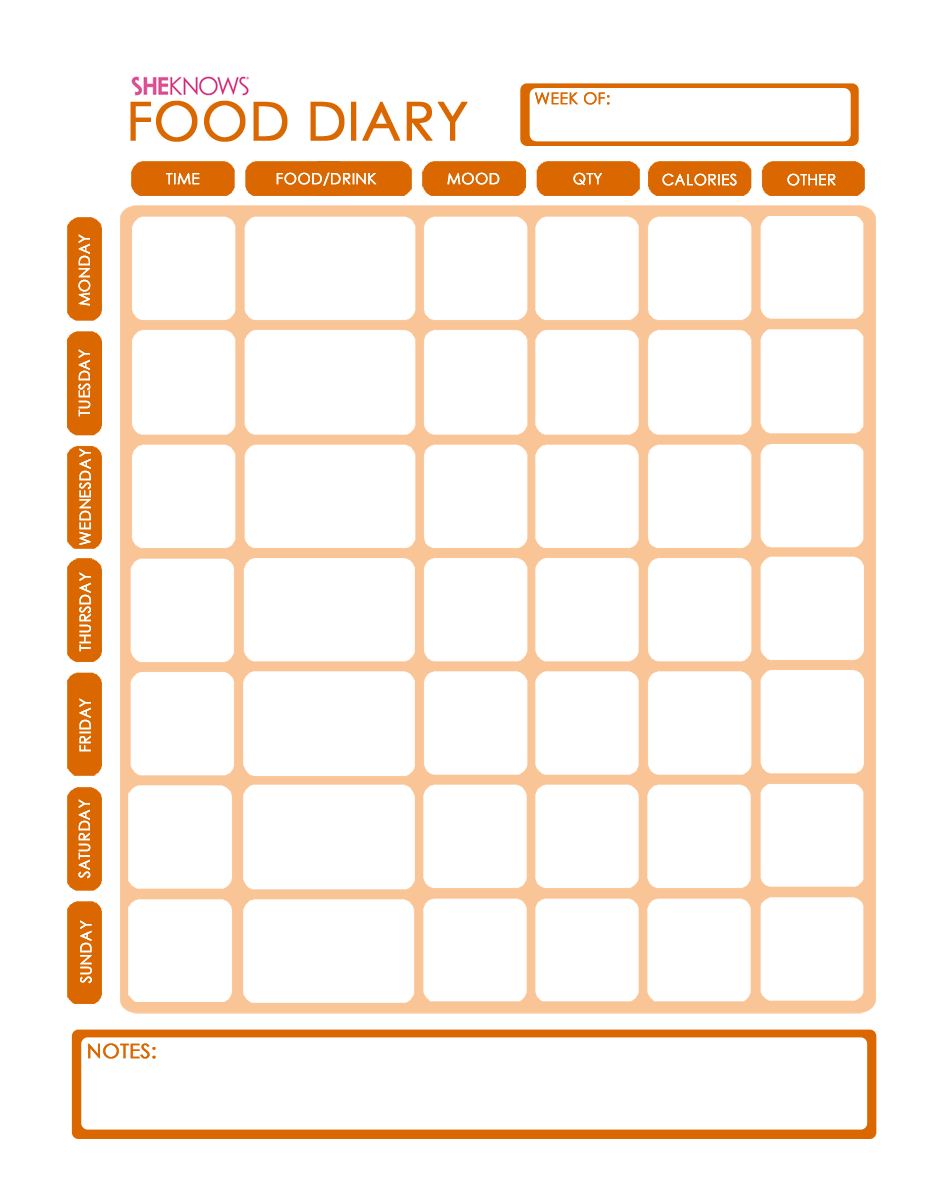Keeping track of what you eat can be an important step towards a healthier lifestyle. Whether you are trying to lose weight, manage a health condition, or simply want to be more mindful of your food choices, a food diary can be a helpful tool. Luckily, there are many resources available for creating and using a food diary, including a variety of printable templates.
The Benefits of Keeping a Food Diary
 There are many reasons why keeping a food diary can be a beneficial habit. First and foremost, a food diary can help you become more aware of what you are eating. It can be easy to forget the details of a meal or snack, but by writing down what you eat and when, you can start to see patterns and habits emerge.
There are many reasons why keeping a food diary can be a beneficial habit. First and foremost, a food diary can help you become more aware of what you are eating. It can be easy to forget the details of a meal or snack, but by writing down what you eat and when, you can start to see patterns and habits emerge.
Additionally, a food diary can be a useful tool if you are trying to lose weight or manage a health condition such as diabetes or high blood pressure. By tracking your food intake, you can identify areas where you may be consuming too much sugar, fat, or sodium, and make adjustments to your diet accordingly.
Finally, a food diary can simply be a helpful way to stay organized and mindful about your nutrition. By taking a few minutes each day to reflect on what you have eaten, you can make better choices going forward and ensure that you are getting the nutrients your body needs.
Printable Templates for Food Diaries
 If you are interested in keeping a food diary, there are many options available for printable templates. One popular template is a weekly food log journal, which allows you to track your meals and snacks for each day of the week. This can be a helpful way to ensure that you are staying on track with your nutrition goals on a day-to-day basis.
If you are interested in keeping a food diary, there are many options available for printable templates. One popular template is a weekly food log journal, which allows you to track your meals and snacks for each day of the week. This can be a helpful way to ensure that you are staying on track with your nutrition goals on a day-to-day basis.
Another option is a complex daily food diary, which provides space for tracking not just meals and snacks, but also factors like water intake, exercise, and vitamin supplements. This can be a great option if you are looking for a more detailed and holistic approach to tracking your nutrition.
 For those who prefer a simpler approach, a basic daily food diary may be a good choice. This type of template typically provides space for tracking breakfast, lunch, and dinner, as well as snacks and beverages. It can be a quick and easy way to keep track of what you are eating without getting bogged down in too many details.
For those who prefer a simpler approach, a basic daily food diary may be a good choice. This type of template typically provides space for tracking breakfast, lunch, and dinner, as well as snacks and beverages. It can be a quick and easy way to keep track of what you are eating without getting bogged down in too many details.
 Using Your Food Diary Effectively
Using Your Food Diary Effectively
Once you have chosen a printable template that works for you, it is important to use your food diary effectively to get the most benefit from it. Here are a few tips to keep in mind:
- Be consistent: Try to track your meals and snacks at the same time each day to establish a routine.
- Be honest: Don’t leave anything out - even small snacks and drinks can add up over time.
- Be specific: Include as much detail as possible about each food item, including portion sizes and ingredients.
- Use it to make changes: Once you have been tracking your food intake for a few weeks, review your diary to identify areas where you may want to make changes to your diet.
Final Thoughts on Food Diaries
 A food diary can be a powerful tool for improving your nutrition, but it is important to remember that no single approach will work for everyone. Experiment with different printable templates and tracking methods until you find what works best for you.
A food diary can be a powerful tool for improving your nutrition, but it is important to remember that no single approach will work for everyone. Experiment with different printable templates and tracking methods until you find what works best for you.
Remember, the goal of a food diary is not to make you feel guilty or deprived, but to help you make positive changes to your diet and lifestyle. By approaching your food diary with an open and curious mindset, you can learn a lot about your eating habits and make small but meaningful changes over time.
So why not give a food diary a try? With so many printable templates available, there is no better time to start tracking your nutrition and working towards a healthier you.